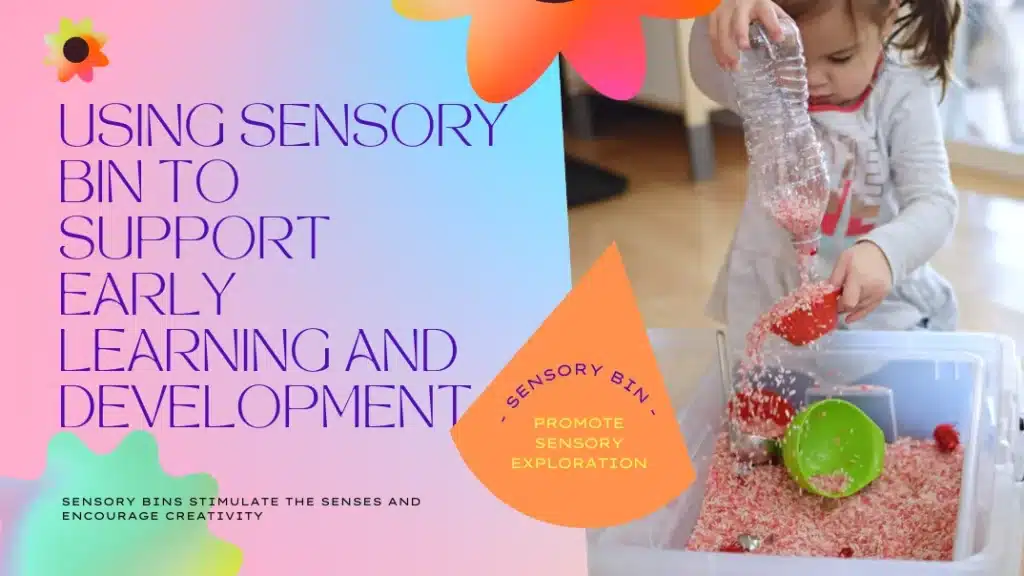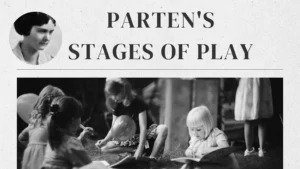In today’s technology-saturated world, children often miss out on valuable hands-on learning experiences. Parents and educators constantly search for effective ways to help children physically and mentally develop. One such tool that has proven highly beneficial is the sensory bin.
Sensory bins are simple yet powerful learning tools that allow children to engage their senses—sight, touch, sound, and sometimes even smell and taste—in a structured but playful environment. These bins provide a safe space for children to explore and manipulate various textures and objects, encouraging cognitive and motor skill development.
Sensory bins stimulate the senses and encourage creativity, language development, and problem-solving abilities. From wet sensory bins filled with water to dry bins packed with rice or beans, sensory play is essential to early childhood education. Whether it’s a fall sensory bin filled with autumn leaves, a themed Halloween sensory bin, or a Christmas sensory bin, sensory play offers countless learning opportunities. In this article, we’ll explore the different types of sensory bins, their benefits, and how to create your own DIY sensory bin activities tailored to promote learning and growth.
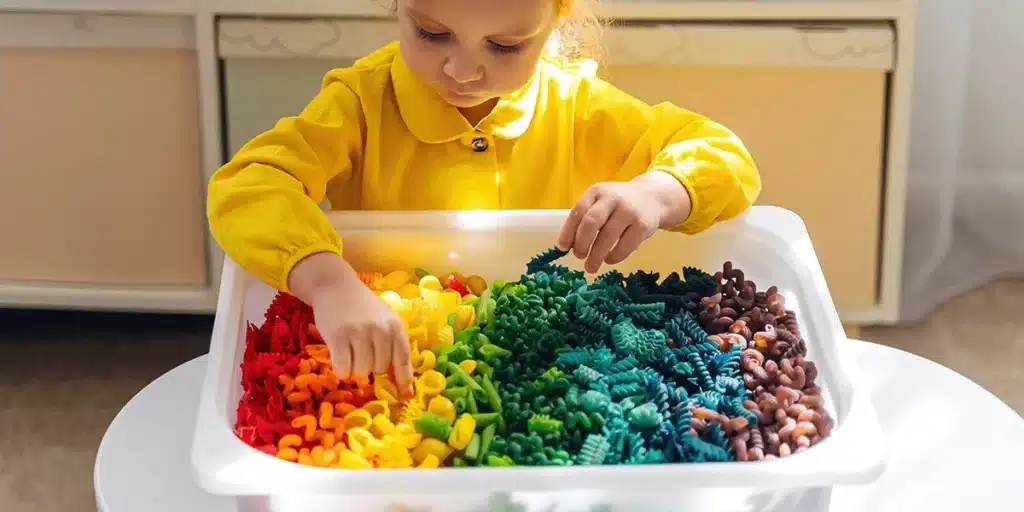
What Are Sensory Bins and Their Role in Early Learning?
Understanding the Purpose of Sensory Bins
A sensory bin is a simple container filled with materials that encourage children to explore their senses in a fun and hands-on way. These materials range from water, sand, or rice to more creative items like slime, pasta, and sensory bin fillers like dried beans. Sensory bins aim to provide children with a safe, controlled space to explore textures, sounds, colors, and more, all while building essential cognitive and motor skills.
Sensory bins in early childhood education promote sensory exploration and help children better understand the world around them. Children learn cause-and-effect relationships by manipulating objects in the bin, developing fine motor skills, and improving hand-eye coordination. From exploring an ocean sensory bin to a themed dinosaur sensory bin, each experience supports learning uniquely. Sensory bins are versatile tools that can be adapted for any season, such as a spring sensory bin filled with colorful flowers or a winter sensory bin complete with “snow” made from cotton or shredded paper.
How Sensory Bins Promote Sensory Exploration
When children engage with a sensory bin, they are using multiple senses simultaneously, which can lead to enhanced sensory processing. For example, a child running their hands through colored rice in a rice sensory bin may experience the sound of the grains as they sift, the feel of the rice slipping between their fingers, and the sight of vibrant colors. This multi-sensory engagement is crucial for developing a child’s sensory integration abilities, helping them respond more effectively to sensory input in daily life.
The possibilities are endless if you’re wondering what to put in a sensory bin. Each filler provides a different texture and learning opportunity, from rainbow rice to water beads. Sensory bins can also be adapted to specific themes, such as a farm sensory bin featuring small toy animals or a bug sensory bin with plastic insects for exploration. The benefits of a sensory bin go beyond just playtime—children are also developing fine motor skills, creativity, and even problem-solving abilities.
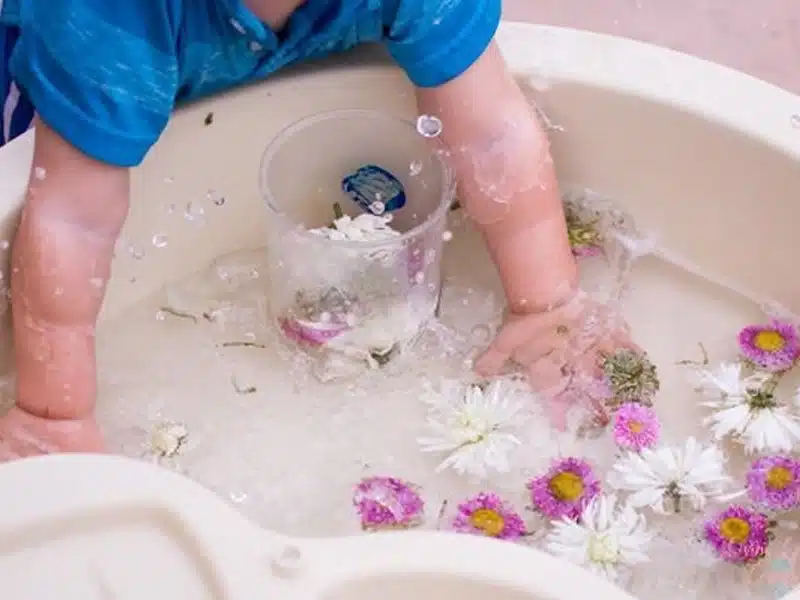
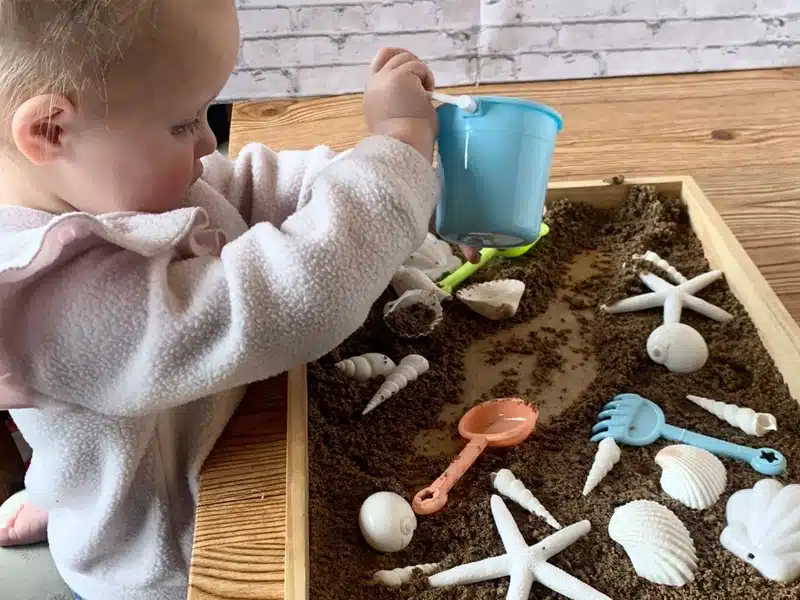
The Importance of Sensory Bins in Child Development
Sensory bins are an integral part of early learning because they stimulate multiple areas of development in young children. These bins engage children in sensory exploration and promote cognitive, language, and motor skills. Below are key areas where sensory bins significantly impact a child’s growth:
Facilitates Sensory Exploration
Sensory bins provide children with hands-on experiences that stimulate their senses—touch, sight, sound, and sometimes even smell and taste. These activities enhance sensory processing, making children more aware of different textures, shapes, and materials. For example, a bug sensory bin filled with plastic insects and dirt allows children to explore and manipulate objects in a way that engages their tactile senses.
Engaging with various sensory materials helps children respond better to sensory input, improving their ability to process and adapt to stimuli in everyday situations. Whether handling rice in a rice sensory bin or feeling the soft textures in a snow sensory bin, sensory exploration is a critical component of early learning.
Promotes Body Awareness
Through sensory bins, children explore their external environment and develop greater body awareness. When they scoop, pour, and manipulate objects in the bin, they better understand their hand-eye coordination, fine motor control, and spatial awareness.
This is especially important for younger children, such as when using a sensory bin for 1 year olds or sensory bin for 2 year olds, as these activities build the foundation for body control and physical awareness. Tasks such as transferring objects from one container to another or navigating a water sensory bin with small toys help children learn how their bodies move and interact with different materials.
Supporting Learning and Language Development
When children engage with a sensory bin, they often encounter new textures, colors, and objects that stimulate their curiosity. As they explore these materials, children naturally start describing their experiences, which helps expand their vocabulary. For example, a child feeling the texture of sand or rice may learn new descriptive words such as “grainy,” “soft,” “smooth,” or “rough.” These simple yet engaging interactions serve as the foundation for improved communication skills.
In addition, sensory bins can be tailored to specific educational themes, such as letters, numbers, or shapes. For instance, you can create an alphabet sensory bin with small plastic letters hidden in rice or sand. Children can dig for the letters and name them as they find them, helping to reinforce letter recognition and early literacy skills. Adults or educators can ask guiding questions like, “Can you find the letter that makes the ‘s’ sound?” further to engage the child in a meaningful learning experience.
For older children, sensory bins can include sight words or math problems. For example, a sight word sensory bin might involve hiding word cards in a bin filled with sand or colored rice, where children must find and read each word they discover. This helps with early reading fluency and encourages children to link sensory experiences with cognitive learning.
Fostering Motor Skills Development
Sensory bins are incredibly effective at developing fine motor skills. When children use their fingers and hands to grasp, pinch, pour, or manipulate small objects within the sensory bin, they strengthen the muscles required for writing, buttoning a shirt, or tying shoes. For example, scooping rice with a spoon or using tweezers to pick up tiny beads helps refine the child’s pincer grip, which is crucial for holding a pencil later in life.
Gross motor skills can also be developed with sensory bins, especially when children are encouraged to move larger objects or use their whole body to engage with the materials. Pouring water between containers or lifting heavier objects like rocks or sandbags helps improve coordination and balance.
For younger children, including activities that focus on hand-eye coordination, can be particularly beneficial. For instance, children can practice scooping beans or small toys from one side of the bin to another using a small spoon. This type of movement strengthens the muscles in their arms and their ability to coordinate their actions with what they see.
Tip for Parents: To encourage fine motor skill development, provide children with tools such as tweezers, scoops, or measuring cups when playing with sensory bins. These tools help challenge their dexterity and precision, leading to stronger hand muscles and improved coordination.
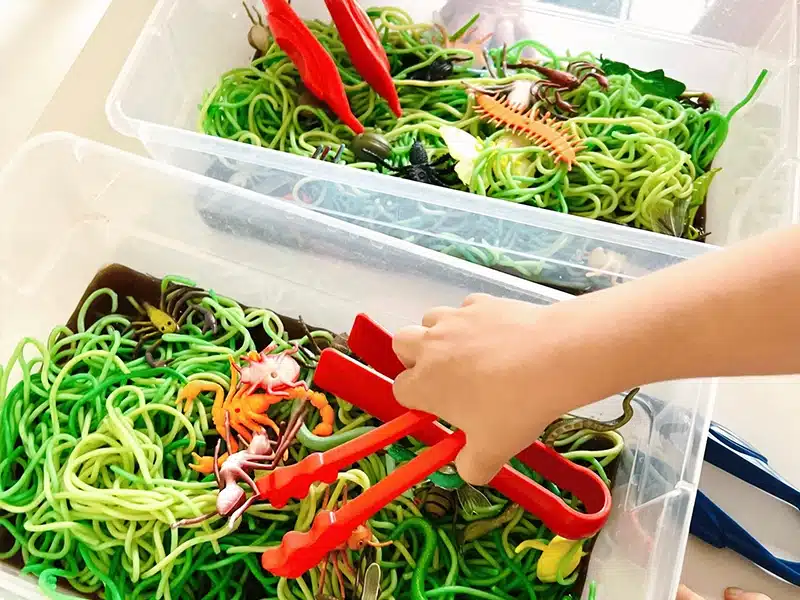

Aids Math Skills
Many sensory bins can be structured to teach math skills by incorporating counting, sorting, and measuring activities. For example, using a bean sensory bin, children can sort beans by size or color, count the number of beans they transfer from one cup to another, or estimate how many scoops it will take to fill a container.
Additionally, tools like measuring cups or funnels can be included in a sensory bin for toddlers to help children understand volume, weight, and basic mathematical concepts in a hands-on way. Sensory play transforms abstract math concepts into tangible experiences that are easier for young children to grasp.
Encouraging Social Skills and Emotional Growth
Sensory bins can also play a significant role in social and emotional development. When children engage in sensory play with their peers, they practice sharing, taking turns, and cooperating—critical social skills they will carry into school and beyond. For example, if two children play with a sensory bin filled with dinosaurs, they may negotiate roles, such as one child being the “explorer” while the other takes on the “dinosaur finder.” These interactions foster teamwork and communication.
In addition to social benefits, sensory play is known to have a calming effect, which can help children who experience anxiety or emotional dysregulation. The repetitive motions involved in activities like pouring sand or sorting beads can be soothing, allowing children to process their emotions in a safe and structured way.
For children with special needs, sensory bins can provide a therapeutic outlet to work on self-regulation and emotional control. Many occupational therapists use sensory bins as part of therapy sessions to help children with sensory processing disorders or autism spectrum disorder learn how to manage sensory input in a controlled manner. This can help reduce sensory overload and provide a calming, grounding experience for children struggling in more chaotic environments.
Pro Tip: Introduce sensory bins as part of a daily calming routine. Before nap time or bedtime, use a sensory bin filled with calming materials such as lavender-scented rice or soft fabrics. This helps children wind down and prepare for rest.


Types of Sensory Bin Materials: Which One Is Right for You?
When creating a sensory bin, the material of the bin itself plays a crucial role in the overall experience. The material you choose can affect the durability, portability, and even the safety of the sensory bin. Depending on your environment and the age of the children, you might want to consider different types of bins based on their construction materials. Here are some common types of sensory bin materials and their advantages and disadvantages:
1. Plastic Sensory Bins
Plastic bins are the most popular choice for creating sensory bins, mainly due to their affordability and availability. These bins are often lightweight, easy to clean, and come in various sizes and shapes. Clear plastic bins allow children to see the contents from different angles, adding a layer of visual engagement.
2. Wooden Sensory Bins
Wooden sensory bins are an excellent choice if you are looking for something sturdy, durable, and aesthetically pleasing. Wooden bins are often larger and provide a more natural, tactile experience, aligning well with nature-themed or Montessori-inspired sensory play. They are more eco-friendly than plastic bins and can blend seamlessly with home decor if left out between play sessions.
3. Metal Sensory Bins
Metal bins are not as commonly used as plastic or wooden bins, but they offer unique benefits in certain situations. Metal sensory bins, often made from aluminum or stainless steel, are highly durable and resistant to wear and tear. They are perfect for outdoor use or holding heavy or sharp objects, which might damage other bins.
4. Fabric Sensory Bins
Fabric bins are a more unconventional choice for sensory play but can be helpful in specific scenarios, especially for younger children. Often made from soft materials like cotton or polyester, fabric bins are collapsible, lightweight, and easy to store. They are also safer for infants and toddlers, who might tip over a more complex bin or injure themselves on the edges.
5. DIY Sensory Bins
For those who prefer to customize their sensory bin, a DIY bin can be created using any container available at home, from old storage boxes to laundry baskets. The advantage of a DIY sensory bin is that you can repurpose items you already own, which is budget-friendly and sustainable.
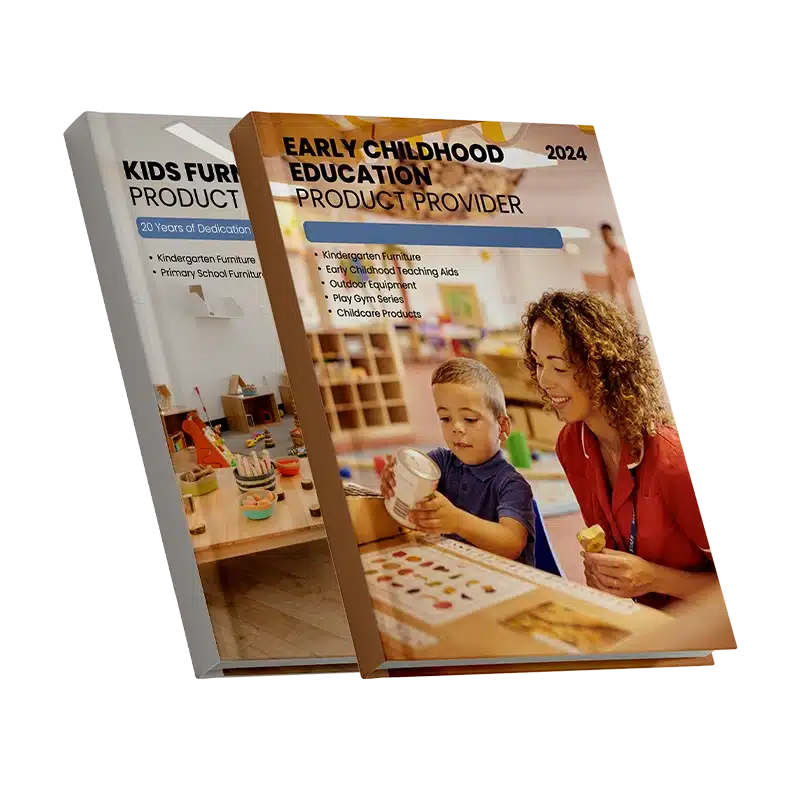
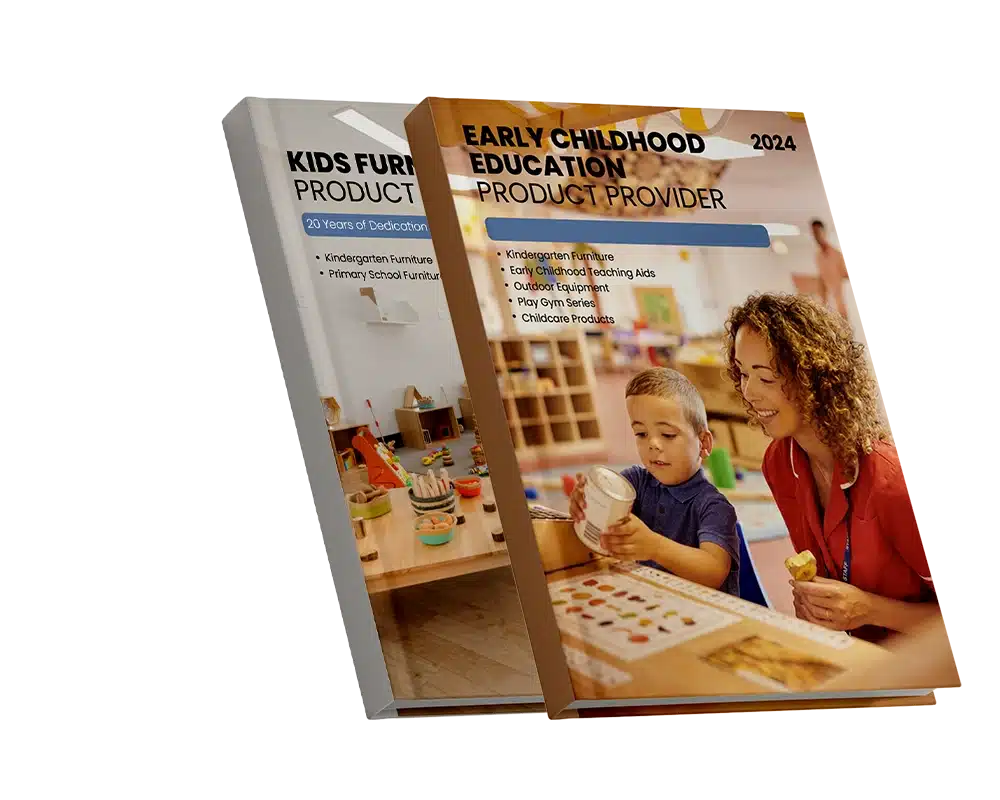
| Material Type | Pros | Cons | Best For |
|---|---|---|---|
| Plastic Sensory Bins | – Affordable – Easy to clean – Lightweight and portable | – Less durable – Not eco-friendly | Wet sensory bins, messy play, outdoor activities |
| Wooden Sensory Bins | – Durable – Eco-friendly – Aesthetic appeal | – Heavy and less portable – Harder to clean (especially for wet bins) | Dry sensory bins, nature-based activities, home decor |
| Metal Sensory Bins | – Extremely durable – Great for outdoor use – Can be used with magnets | – Heavy – May rust – Can be noisy | Sensory bins involving magnets, outdoor play with heavy or sharp materials |
| Fabric Sensory Bins | – Soft and safe for younger children – Collapsible and easy to store – Lightweight and portable | – Not durable – Difficult to clean, especially with wet materials | Infant and toddler sensory play, indoor use with soft materials |
| DIY Sensory Bins | – Customizable – Budget-friendly – Flexible and adaptable | – Durability varies – May not be as safe or sturdy as commercial bins | Parents looking for budget-friendly, customized sensory experiences |
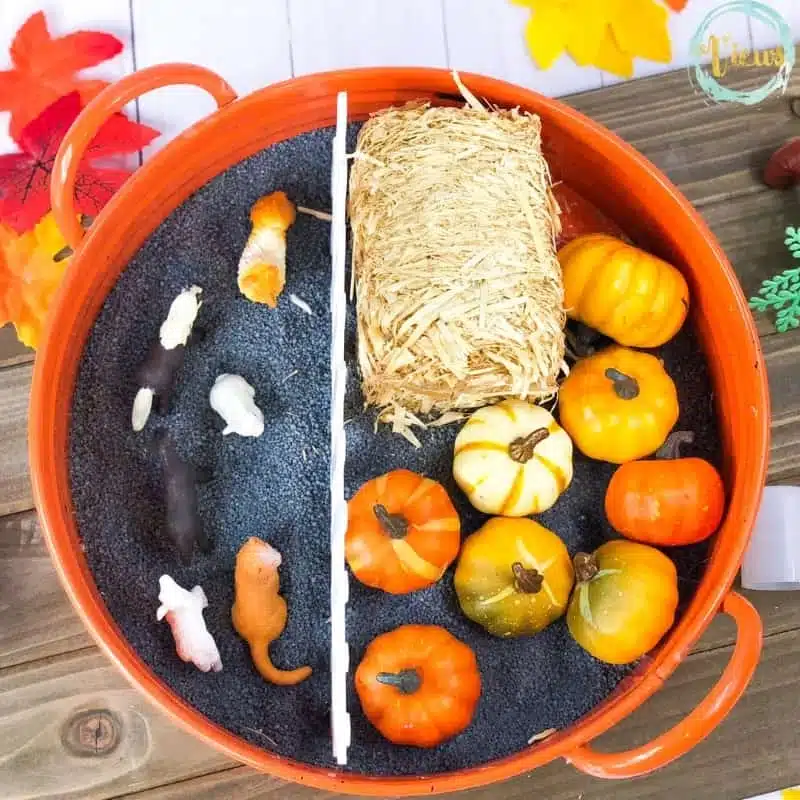
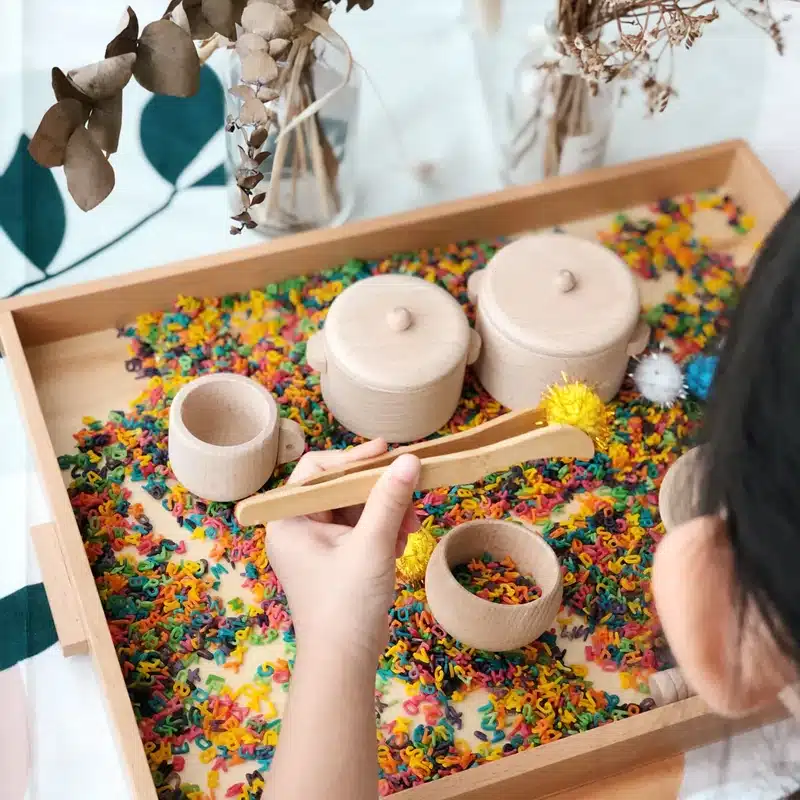

Types of Sensory Bin Activities
Sensory bins can be broadly categorized into wet sensory bins and dry sensory bins, each offering a unique learning experience. Let’s explore both types and provide creative ideas for incorporating them into your child’s routine.
Wet Sensory Bin
A wet sensory bin introduces water, soap, ice, or slime. These bins engage children in messy, fluid play that allows them to explore the properties of liquids and semi-liquids. Wet bins are particularly effective for children who enjoy tactile sensations and can help improve their understanding of scientific concepts like density, buoyancy, and water absorption.
Here are a few engaging wet sensory bin ideas:
- Water Cycle Sensory Bin: This fun activity teaches children about the water cycle. Fill the bin with water beads representing raindrops and use cotton balls as clouds. Add a small water spray bottle to simulate rain, helping children understand precipitation, evaporation, and condensation concepts.
- Ocean-Themed Sensory Bin: Fill the bin with blue water and add toy sea creatures like fish, turtles, and whales. Children can use small cups or nets to “catch” the creatures, learning about marine life and the ocean environment.
- Soap and Bubble Sensory Bin: Fill the bin with warm, soapy water and add plastic dishes or toys that need “cleaning.” This practical activity teaches children about hygiene while engaging their senses through the feel of bubbles and the sound of splashing water.
- Ice Sensory Bin: Fill the bin with ice cubes and let the child explore the cold sensation. Add small toys frozen in the ice that children can “rescue” by pouring warm water over them. This bin helps children learn about states of matter and melting.
Pro Tip: To enhance the sensory experience, add essential oils like lavender or lemon to wet sensory bins. These scents can calm or invigorate children, depending on the desired outcome.
Dry Sensory Bin
A dry sensory bin typically includes rice, beans, sand, pasta, or dried leaves. Dry bins are excellent for children who prefer quieter, more focused play. These bins help develop fine motor skills, improve attention to detail, and encourage tactile exploration without the mess of water or slime.
Here are some examples of dry sensory bins:
- Nature-Themed Sensory Bin: Fill the bin with natural materials like dried leaves, small sticks, acorns, and rocks. Add toy animals or insects to mimic a forest or jungle environment, allowing children to learn about nature and ecosystems.
- Construction-Themed Sensory Bin: Fill a bin with dry beans or rice and add small construction vehicles like bulldozers, dump trucks, and diggers. Children can use the cars to move the beans around, mimicking a construction site, encouraging imaginative play, and developing fine motor skills.
- Alphabet Sensory Bin: Hide plastic letters in a bin filled with rice or pasta. Children can dig for the letters and name them as they find them, reinforcing letter recognition and early literacy skills.
- Food-Themed Sensory Bin: Use dried pasta or beans as the filler, and include toy food items and kitchen utensils. Children can practice “cooking,” which promotes imaginative play and introduces practical life skills like mixing and measuring.
Engagement Tip: Rotate between wet and dry sensory bins to keep children engaged and excited about new sensory experiences.
How to Create an Educational Sensory Bin Step-by-Step
Creating a sensory bin is simple and requires just a few basic materials. The flexibility of sensory bins allows for endless creativity, as you can tailor the bins to fit your child’s interests, developmental needs, and the educational themes you want to explore.
Step 1: Choose a Sensory Bin Container
Start by selecting a container appropriate for your child’s age and the type of sensory materials you plan to use. Shallow plastic bins are great for young children, as they can easily reach the materials, while deeper bins might be better for older children who enjoy more dynamic play. If creating a wet sensory bin, ensure the container is waterproof and sturdy.
Consider the environment where your child will play. A shallow container will minimize mess for indoor play, while outdoor play may allow larger, deeper bins to accommodate water or more oversized sensory items. If you’re planning a sensory bin for multiple children, you may also want to opt for a larger bin that allows ample space for each child to engage.
Additionally, having covered sensory bins or sensory bins with lids can help keep materials fresh and prevent spills. A covered sensory bin with access for hands allows children to explore the materials inside without creating a mess, making it an excellent option for classrooms or playrooms.
Step 2: Pick a Theme
Choosing a theme adds structure and educational value to the sensory bin. Some popular themes include:
- Seasons: Use pinecones, leaves, or small pumpkins for a fall sensory bin. For colder months, consider a snow sensory bin with cotton balls or fake snow for children to explore.
- Outer Space: Create a “galaxy” with black beans and add star-shaped toys or astronaut figures to make a fun and engaging space sensory bin.
- Farm Animals: Use corn kernels as the filler and include plastic animals like cows, pigs, and chickens to simulate a farm environment. This can also be transformed into a Thanksgiving sensory bin by adding small toy vegetables or food items.
Themes can be as straightforward or complex as you want, but they provide an excellent way to keep children engaged and encourage them to explore specific concepts. For example, in a farm-themed sensory bin, children can learn about different types of animals, what they eat, and how they contribute to farm life. Educational tools like small animal cards or farm equipment can enrich the learning experience.
Step 3: Choose Sensory Bin Fillers
Fillers are the sensory materials that engage the child’s senses. Common options include:
- Dry fillers: Rice, beans, sand, dried pasta, or small pebbles.
- Wet fillers: Water, slime, water beads, or shaving cream.
For those who prefer eco-friendly options, consider bulk sensory bin fillers like dried beans or lentils, which are both affordable and reusable. You can also try edible sensory bin ideas for younger children who may still be in the “mouthing” stage, such as using cooked pasta or jello.
You can also mix and match materials for a more complex sensory experience. For example, you could combine water beads and shaving cream in a wet bin to create a squishy, bubbly texture that children will love to explore. For a dry bin, try combining rice with small pebbles for an interesting contrast in texture.
Step 4: Add Tools and Toys
Finally, sensory bin tools like scoops, funnels, measuring cups, and tweezers should be added to help the child manipulate the materials. Include small toys or figurines that match the theme, such as toy dinosaurs, farm animals, or cars. These tools and toys enhance the sensory experience by encouraging fine motor skill development and imaginative play.
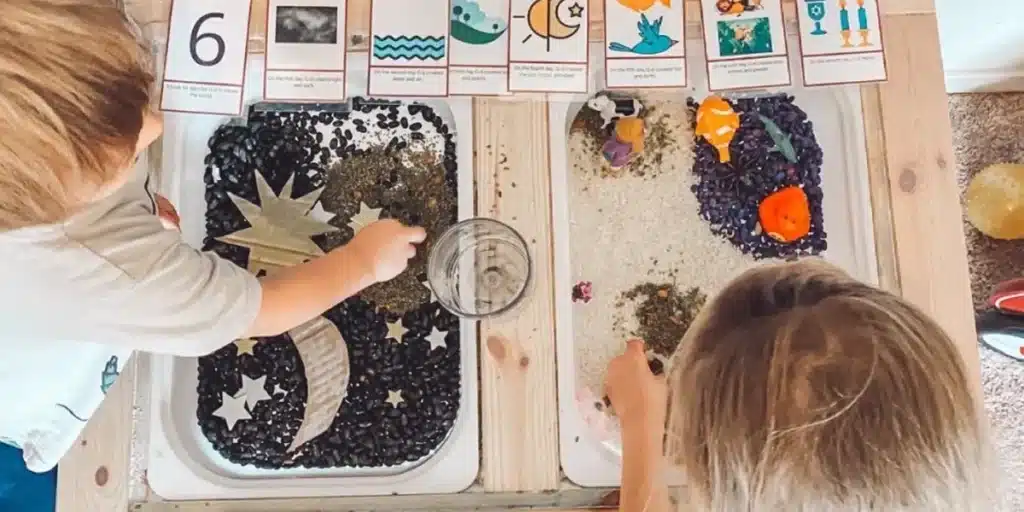
Creative Sensory Bin Ideas to Promote Learning
Here are additional ideas for creative sensory bins that promote both learning and fun:
- Dinosaur Sensory Bin: Fill the bin with sand and small plastic dinosaurs. Children can use brushes or small shovels to “excavate” the dinosaurs, learning about fossils and paleontology while engaging in imaginative play.
- Weather Sensory Bin: Use blue water beads for “rain” and cotton balls for “clouds.” Children can explore weather concepts by “making it rain” with a spray bottle and observing how the materials interact.
- Dishwashing Sensory Bin: Fill a bin with soapy water and plastic dishes or toys that need washing. This practical activity helps children learn about responsibility and personal care while developing fine motor skills.
- Treasure Hunt Sensory Bin: Hide tiny “treasures” such as coins, gems, or colorful stones in a bin filled with sand or rice. Children can dig for the items using small shovels, practicing problem-solving skills and hand-eye coordination.
- Science Experiment Sensory Bin: For older children, incorporate simple science experiments into sensory play. For instance, add baking soda and vinegar to a bin filled with small volcano models and watch as children explore chemical reactions in a safe, controlled environment.
- Holiday-Themed Sensory Bins: Special holidays provide excellent opportunities for sensory play. Create a Halloween sensory bin filled with spooky items like plastic spiders, orange rice, and small pumpkins, or a Christmas sensory bin with red and green materials, small ornaments, and glitter. For Thanksgiving, transform a bin into a Thanksgiving sensory bin using corn kernels, toy turkeys, and small food items.
- Spring Sensory Bin: As the weather warms up, a spring sensory bin filled with pastel-colored rice, plastic flowers, or tiny bugs can introduce children to the concept of nature and renewal. Similarly, you could create an apple sensory bin in the fall to teach children about the harvest.
Creative Tip: Keep a variety of sensory bin themes on hand and rotate them weekly to maintain engagement and excitement. You can also ask your child to help choose a theme or suggest ideas, further involving them in the learning process.
The Lasting Benefits of Sensory Bins
Sensory bins are more than just an enjoyable activity—they are foundational for fostering early learning and development. By engaging children in multi-sensory exploration, sensory bins enhance cognitive, motor, and social skills, helping children become more capable and confident learners. Whether using a wet sensory bin filled with water or a dry sensory bin packed with sand or rice, these activities provide invaluable opportunities for children to learn through play.
The adaptability of sensory bins makes them a versatile and long-lasting resource for parents and educators. They can introduce new concepts, support classroom learning, or provide a calming, therapeutic experience for children who need emotional regulation. Furthermore, sensory bins promote creative thinking, problem-solving, and curiosity, critical components of a well-rounded educational experience.
Incorporating sensory bins into daily or weekly activities can impact a child’s development, encouraging curiosity, creativity, and a love for learning. With endless themes and materials to choose from, sensory bins can easily be adapted to meet the needs and interests of any child, making them a versatile and essential tool in early education.
Sensory bins are a simple yet powerful way to bring learning to life for young children. By providing them with hands-on opportunities to explore, experiment, and play, we open the door to a world of discovery that supports their growth and development in profound ways.

